Zacharie Vincent and His Son Cyprien c. 1851
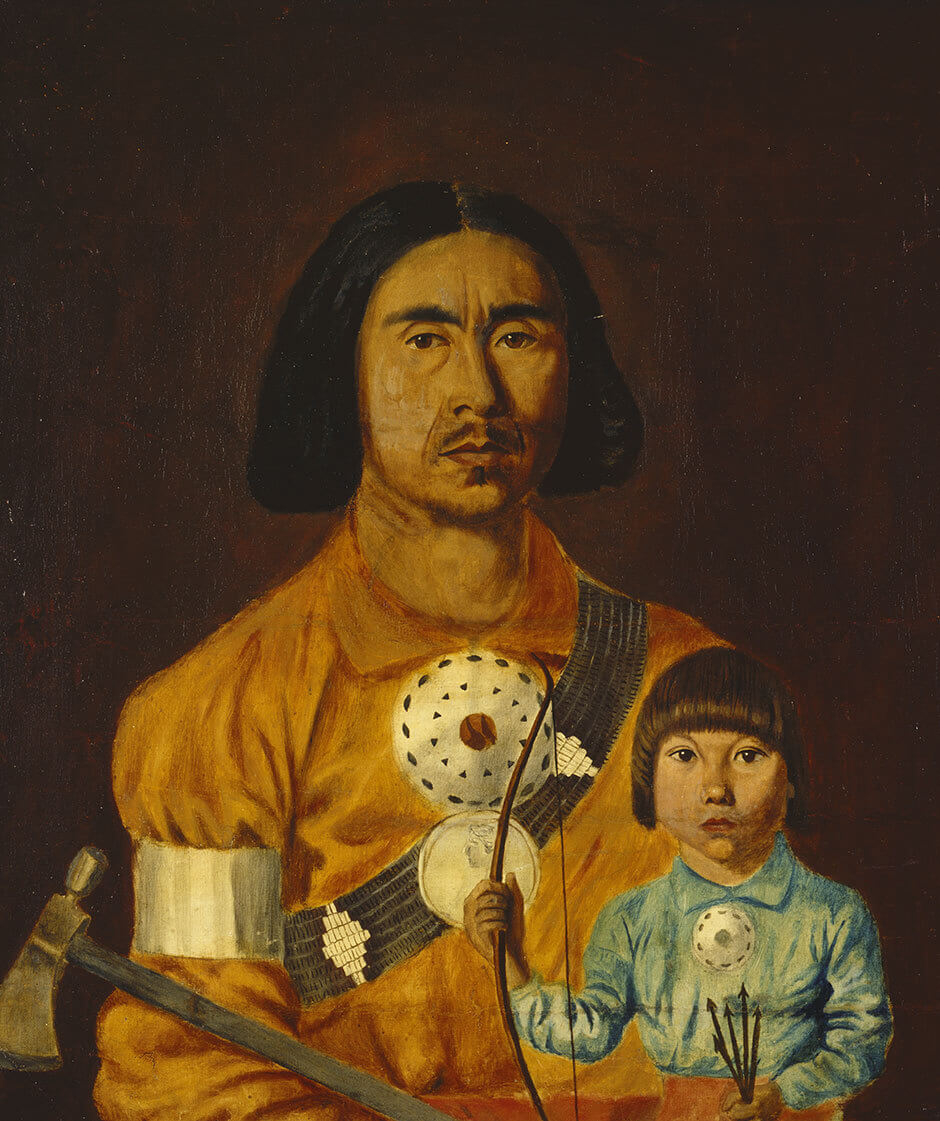
Zacharie Vincent, Zacharie Vincent and His Son Cyprien, c. 1851
Oil on canvas, 48.5 x 41.2 cm
Musée national des beaux-arts du Québec
In this self-portrait, and others from around this time, Vincent portrays himself with his eldest son, Cyprien, clearly offering evidence that his own line was in no danger of dying out, despite the early death of his two younger sons, Gabriel in 1850 and Zacharie in 1855. Zacharie Vincent’s four children were born in the mid-nineteenth century, when the community of Jeune-Lorette was experiencing a regeneration, culturally and demographically, thanks to the prosperity of the village’s artisanal industries. This painting can be understood as a conscious response to those who had predicted the disappearance of the Hurons.
The portrait presents certain problems of scale: the boy is extremely small, and his arms are disproportionate to the rest of his body. This awkwardness seems to be intentional, the result of the artist’s decision to use different styles of representation. The viewer’s eye is drawn to the details of the facial features, which are rendered with careful attention to accuracy, while the clothing and ornaments are represented in a freer style, symbolically rather than realistically.
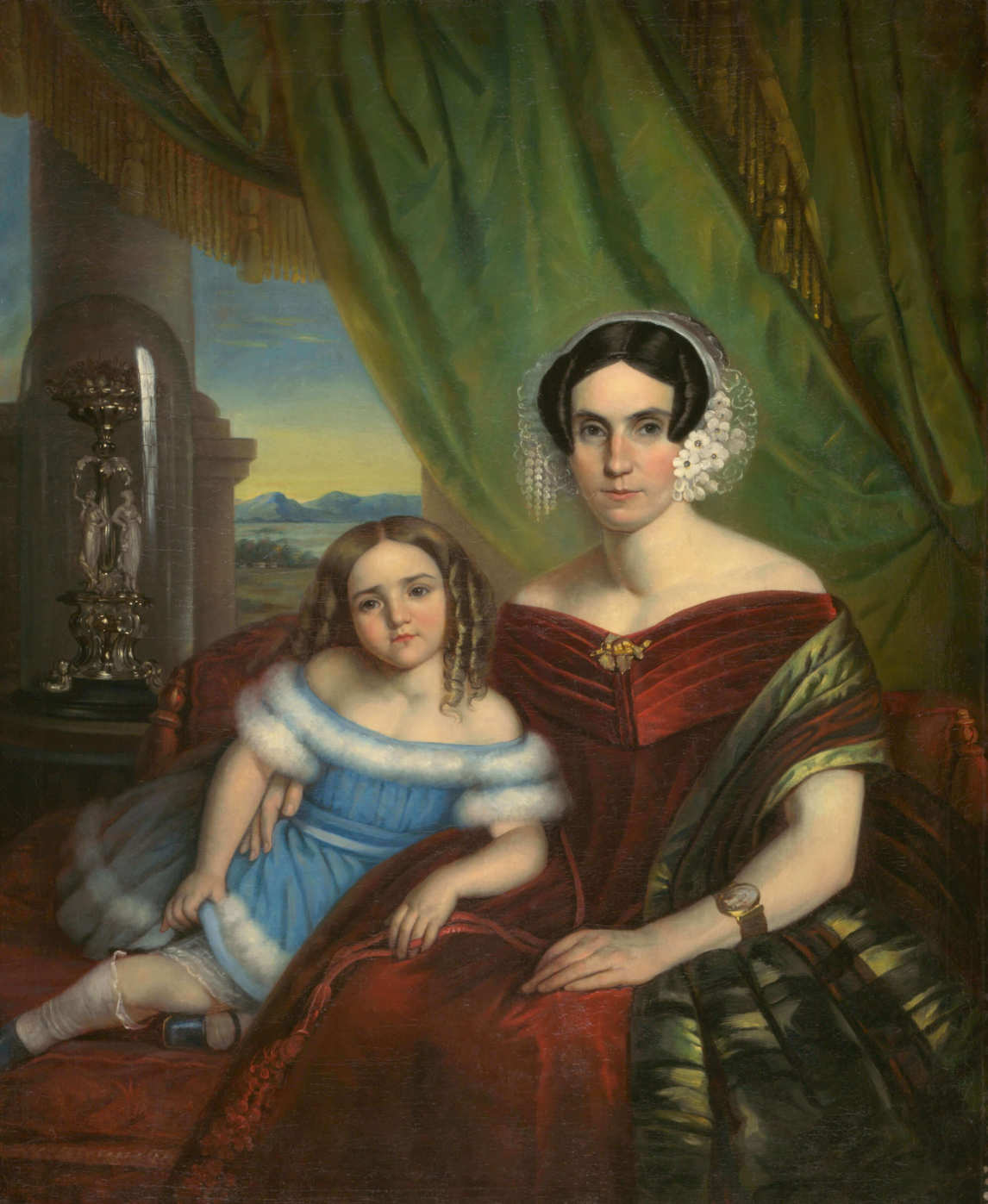
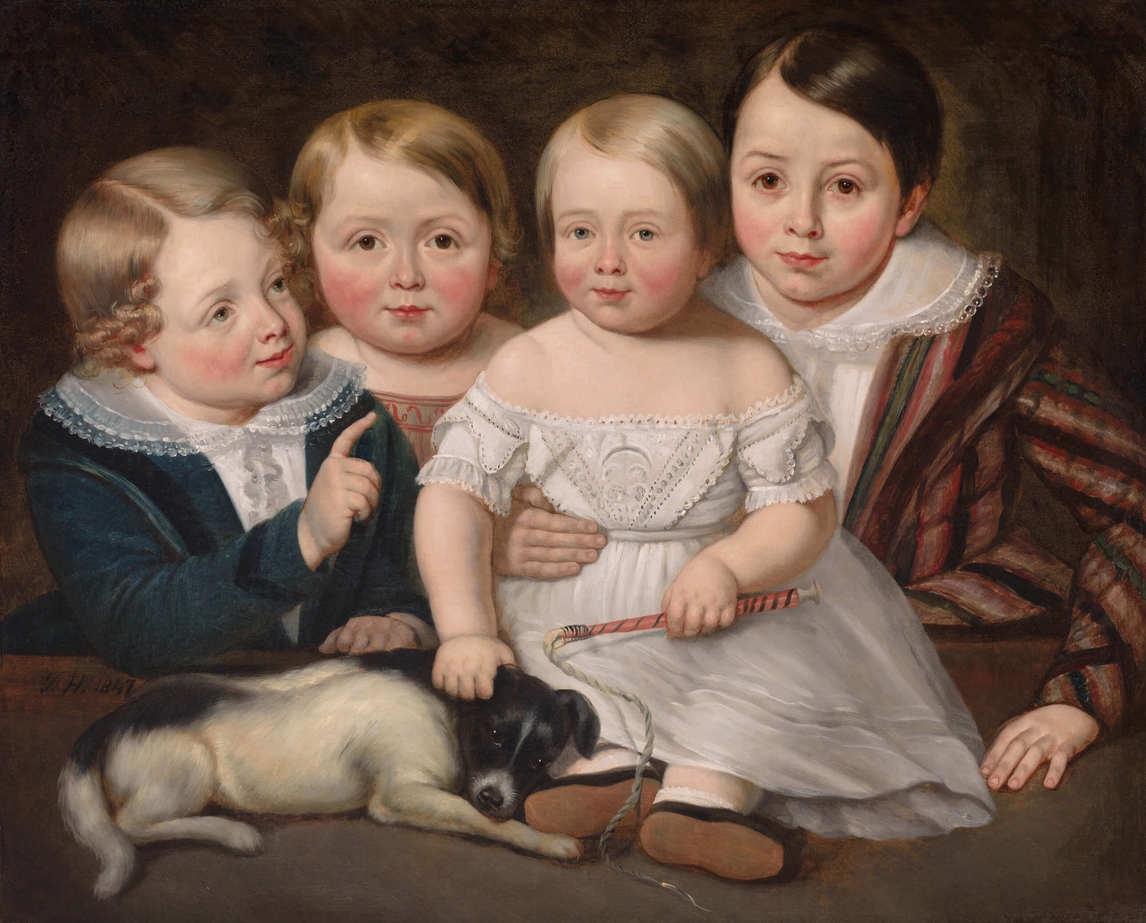
The treatment, which moves from a flattened to a more modelled effect, seems to divide the work into two dimensions: one is marked by the realism inherent in a portrait of a specific subject, taken from life; in the other, symbol transcends reality. The father’s face, seen as if in close-up, in contrast to the reduced scale of the boy’s arms and hands, draws the viewer’s attention not only to the details of costume and ornament but also to the face and eyes of the subjects. The intensity of their gaze and the richness of their dress create a repoussoir effect against the dark, monotone backdrop. The metal ornaments (the medal and the armband) present a muted, opaque surface, without reflections, once again allowing the artist to depart from strict realism while effectively capturing the attention of the viewer.
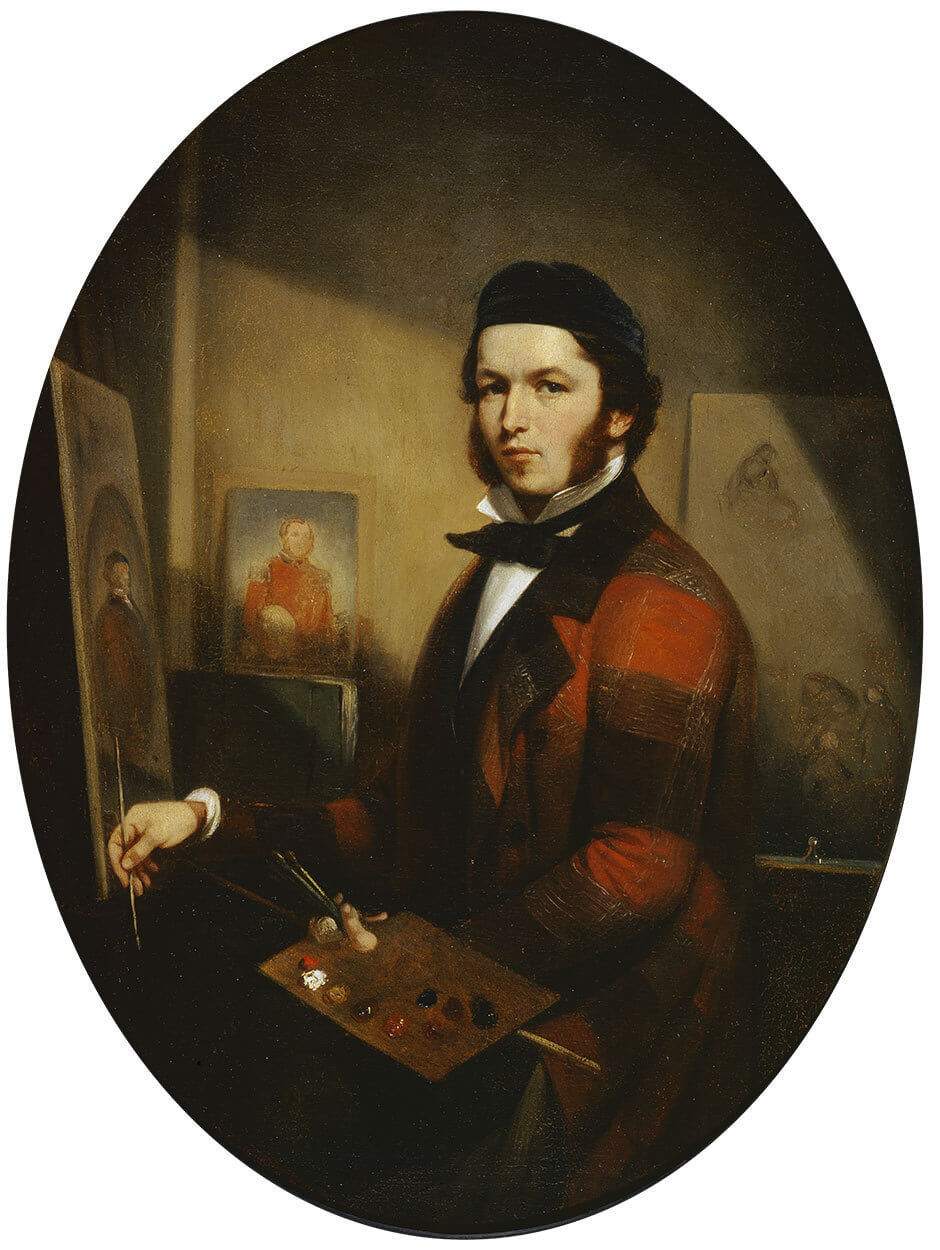
For iconographic inspiration Vincent may have looked to the family portraits that had begun to appear at mid-century with the rise of the bourgeoisie, as society began to place a higher value on the mother, the education of children, and the comforts of home. Before the democratizing effect of photography became widespread, the painted family portrait was a mark of pride in a family’s lineage. The paintings Madame René-Édouard Caron, Née Joséphine de Blois, and Her Daughter Ozine, 1846, and Adolphe, Auguste, Eugène and Alphonse Hamel, the Artist’s Nephews, 1847, both by Théophile Hamel (1817–1870), offer images of family members united by bonds of duty and affection, in relationships that are at once social and private. But as the art historian and curator Mario Béland remarks, children are usually portrayed together in a small group, or with their mother; fathers rarely appear.
Vincent is thought to have frequented the Quebec City studio of Théophile Hamel, whose paintings Self-Portrait in the Studio, c. 1849–50, and Self-Portrait in the Landscape, c. 1841–43, propose a self-reflective and rhetorical play on the status of the artist and his work. Since the Renaissance, self-portraits have been used by artists to mark significant stages in their lives. In the early years of his career Vincent used the genre to define his identity, both professional and individual, and to document his status as a father and an artist.

 About the Author
About the Author
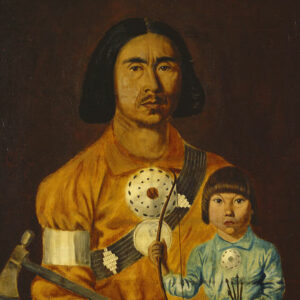 More Online Art Books
More Online Art Books
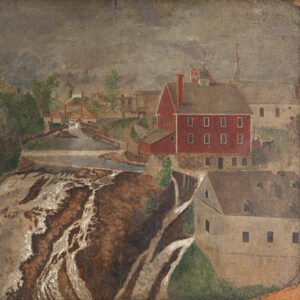 Acknowledgements
Acknowledgements